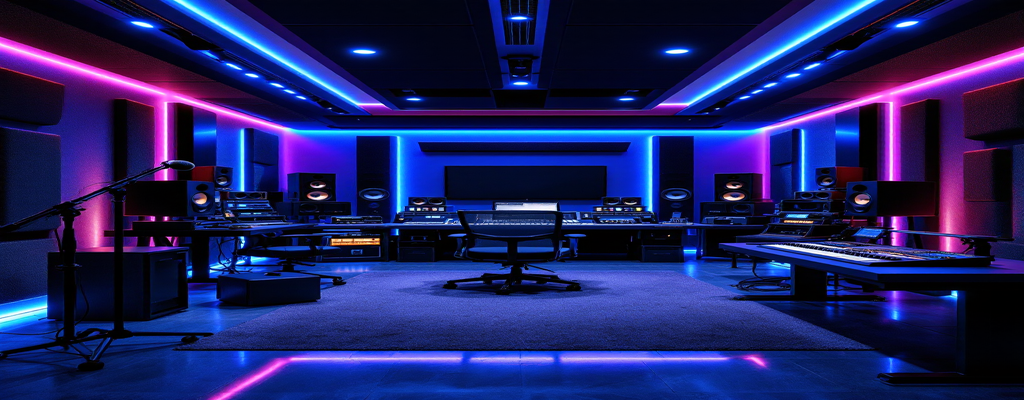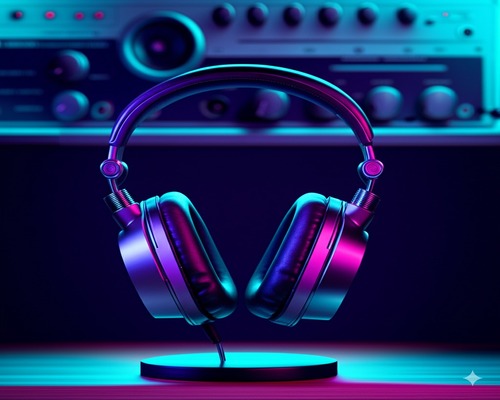
What is AI in classical and orchestral music? It’s basically smart computer programs helping to create, perform, and experience music that’s typically played by orchestras or chamber groups. These AI tools can do all sorts of cool stuff – they can write new music that sounds like it was made by Mozart, help conductors lead better performances, or even bring incomplete classical pieces back to life. What makes this different from AI in pop or hip-hop is that classical music has its own special challenges. The pieces are usually longer and more complex, with tons of different instruments playing together and following strict traditional rules. AI has to understand all this complexity to be useful.
What Is AI in Classical and Orchestral Music?
Let’s get real about what AI in classical and orchestral music actually means. We’re not just talking about computers recording sounds. We’re talking about smart programs that really understand how classical music works – from the structure of a sonata to how a theme develops throughout a symphony.
These programs can do things that seemed like science fiction just a few years ago. They can listen to all of Beethoven’s symphonies and then compose something new in his style. They can follow a soloist in real-time and adjust the accompaniment when they change tempo. Some orchestras are already performing pieces partly or completely written by AI, and many listeners can’t even tell it’s not 100% human-created.
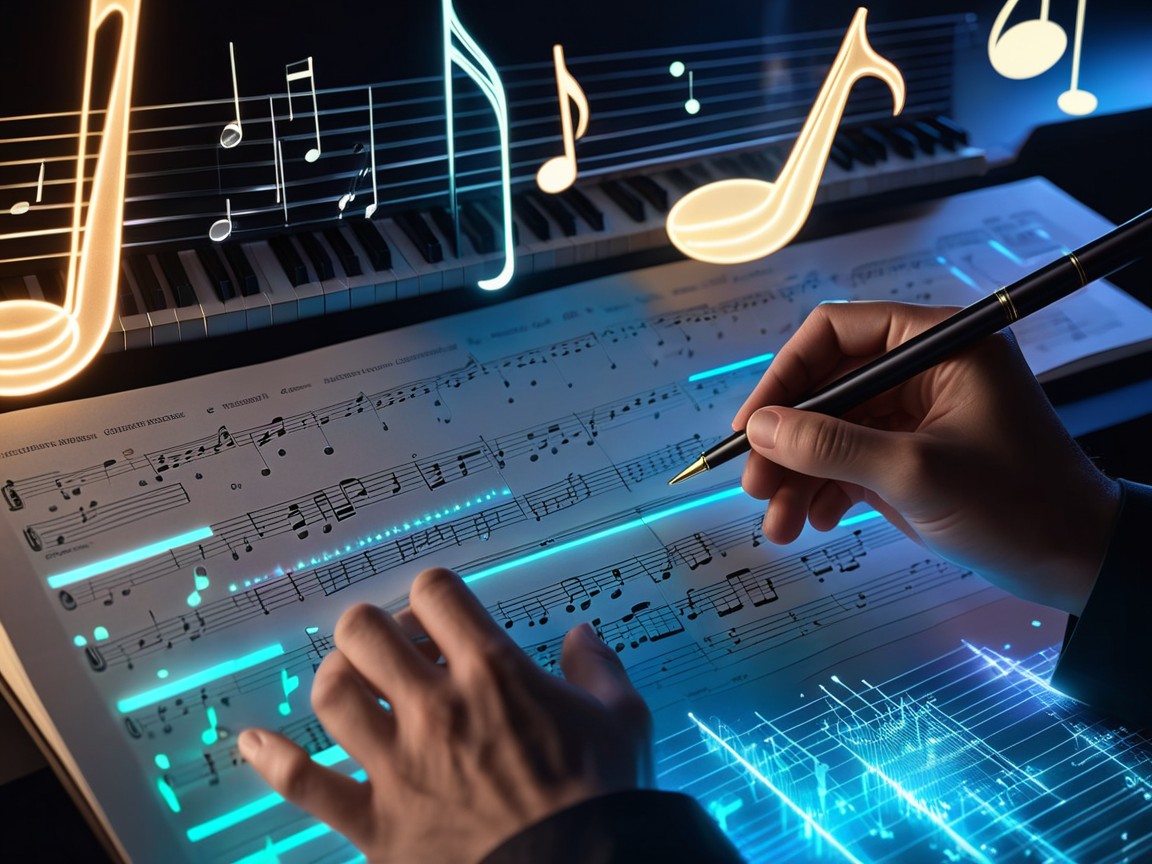
Defining AI’s Role in Classical Composition
AI classical composition tools work differently from those in other genres:
- They analyze hundreds of years of musical development
- They understand complex musical forms like sonatas and symphonies
- They can generate multi-part arrangements for dozens of instruments
- They follow classical music’s strict rules while finding creative possibilities
Unlike pop music where AI might generate a catchy hook, AI-generated classical music needs to maintain interest across longer, more complex structures – sometimes lasting over 30 minutes. The impact of AI in music is particularly interesting in classical, where traditions run deep.
From Mozart to Machine Learning – A Timeline of Integration
Classical music’s relationship with technology isn’t as new as you might think:
- 1770s: Mozart’s “Musikalisches Würfelspiel” used dice to randomly generate compositions
- 1950s: First computer-generated classical music experiments at Bell Labs
- 1980s: David Cope’s EMI program creates works in the style of classical composers
- 2010s: First neural network-based systems for classical composition
- 2020s: AI orchestral tools become widely available to composers and performers
This progression shows how machine learning in classical music builds on centuries of algorithmic thinking about composition.
The Rise of Generative AI in Orchestral Scores
Today’s AI symphonic compositions use several approaches:
- Neural networks trained on thousands of classical pieces
- Systems that understand musical structure and theory
- Tools that can generate complete orchestral scores with proper notation
- Programs that can imitate specific composers’ styles
The results can be surprisingly convincing. In blind tests, audiences often struggle to distinguish between human-composed and AI-generated classical music, especially in shorter pieces or excerpts.
How AI Enhances Classical Music Creation
AI in classical and orchestral music isn’t replacing composers – it’s giving them new creative tools.
Composing Symphonic Structures with AI Assistance
Creating a symphony traditionally takes months or years of work. AI classical composition tools speed this up by:
- Generating initial themes and motifs
- Suggesting development sections and variations
- Handling routine orchestration tasks
- Testing different harmonic progressions quickly
Composers can now explore more musical ideas in less time, using AI tools for musicians to handle technical aspects while focusing on artistic vision.
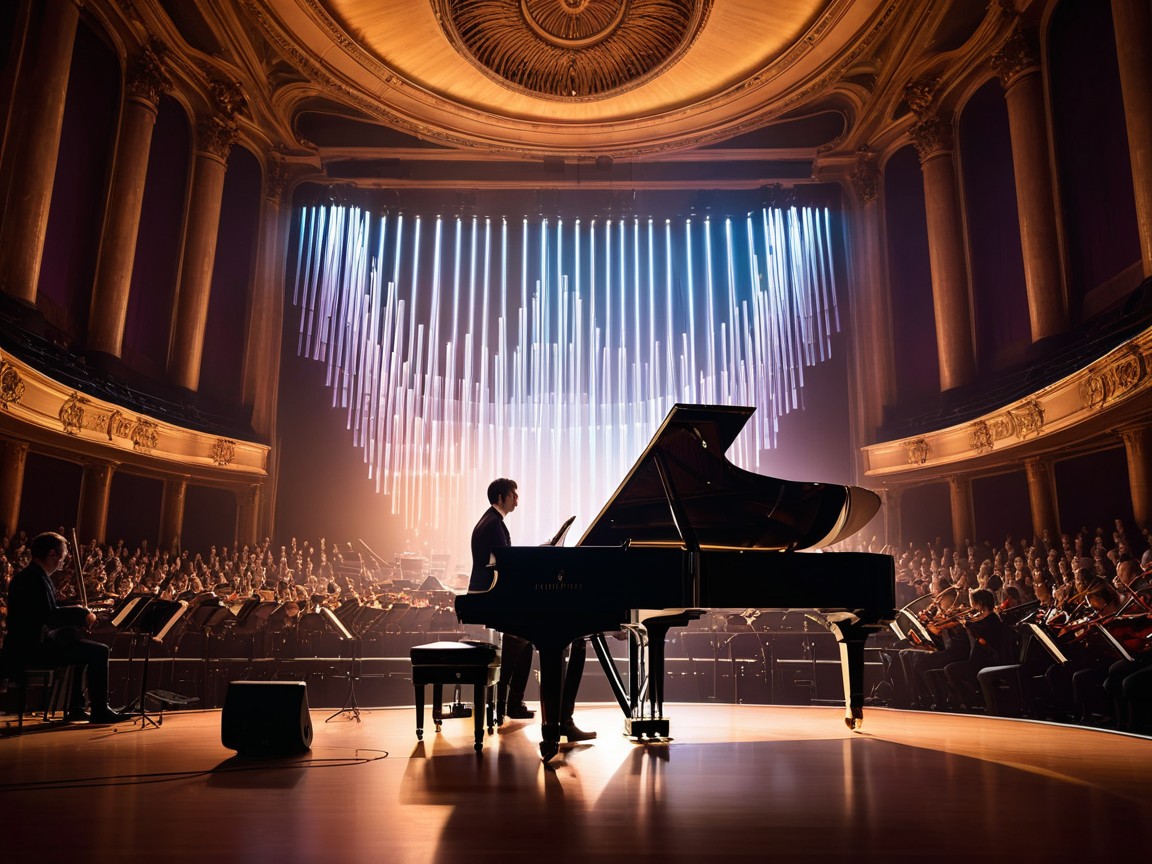
AI as a Co-Composer for Contemporary Classical Works
Many modern composers view AI as a collaborator:
- They provide initial ideas or constraints
- The AI suggests developments or countermelodies
- The human composer selects, refines, and edits
- The final piece reflects both human vision and AI capabilities
This back-and-forth creates music that neither could make alone. Neural networks in music excel at finding unexpected connections and possibilities that humans might overlook.
Examples of AI-Generated Classical Music
Several notable AI classical composition projects show what’s possible:
- AIVA (Artificial Intelligence Virtual Artist) has composed full symphonic works performed by human orchestras
- OpenAI’s MuseNet generates sophisticated classical pieces in various composer styles
- Google’s Magenta project creates short classical works that blend historical styles
Most interesting are the “hybrid” pieces where human composers and AI systems collaborate closely. These works often push classical music in new directions while respecting its traditions.
AI in Classical and Orchestral Music Performance and Conducting
AI isn’t just changing composition – it’s transforming how classical music is performed.
Real-Time Adaptive AI for Live Performances
New AI orchestral tools can respond during live concerts:
- AI systems follow soloists and adapt accompaniment in real-time
- Digital score systems adjust to conductor tempo changes
- Analytical tools provide feedback on ensemble balance and intonation
At the 2024 BBC Proms, AIVA’s “Conductor Mode” allowed Yo-Yo Ma to perform Elgar’s Cello Concerto with an AI orchestra that adapted to his tempo changes in real-time. This flexibility creates more natural and expressive performances.
Source: TheArts.ai
AI Conductors and Their Role in Modern Symphonies
While not replacing human conductors, AI-assisted conducting systems now:
- Help train student conductors
- Provide conducting for practice sessions when no conductor is available
- Create virtual conducting experiences for educational purposes
- Analyze conductor movements to improve coordination
These tools are particularly valuable for smaller orchestras and educational institutions with limited resources for rehearsals.
Synchronization Between AI and Human Musicians
Getting humans and AI to play together seamlessly is challenging but increasingly possible:
- Systems track tempo and dynamics from human performers
- AI adjusts its output to match human expressivity
- Some setups use subtle audio cues to help musicians stay with the AI
- Others employ visual guides like augmented reality displays
This synchronization enables new types of orchestral arrangement with AI where digital and acoustic instruments blend seamlessly.
Benefits and Challenges of AI in Classical and Orchestral Music
Like any technological shift, AI in classical and orchestral music brings both opportunities and concerns.
Creative Expansion vs. Loss of Tradition
The classical world is debating the proper role of technology:
- AI opens new creative possibilities beyond human limitations
- But some fear losing connection to classical music’s human traditions
- Technology makes composition more accessible to non-experts
- Yet the human element of interpretation and emotion remains crucial
An AI-generated “new Vivaldi” piece performed at La Scala in 2024 highlighted these tensions. While technically impressive, 62% of audience respondents called it “technically flawless but soul-less.”
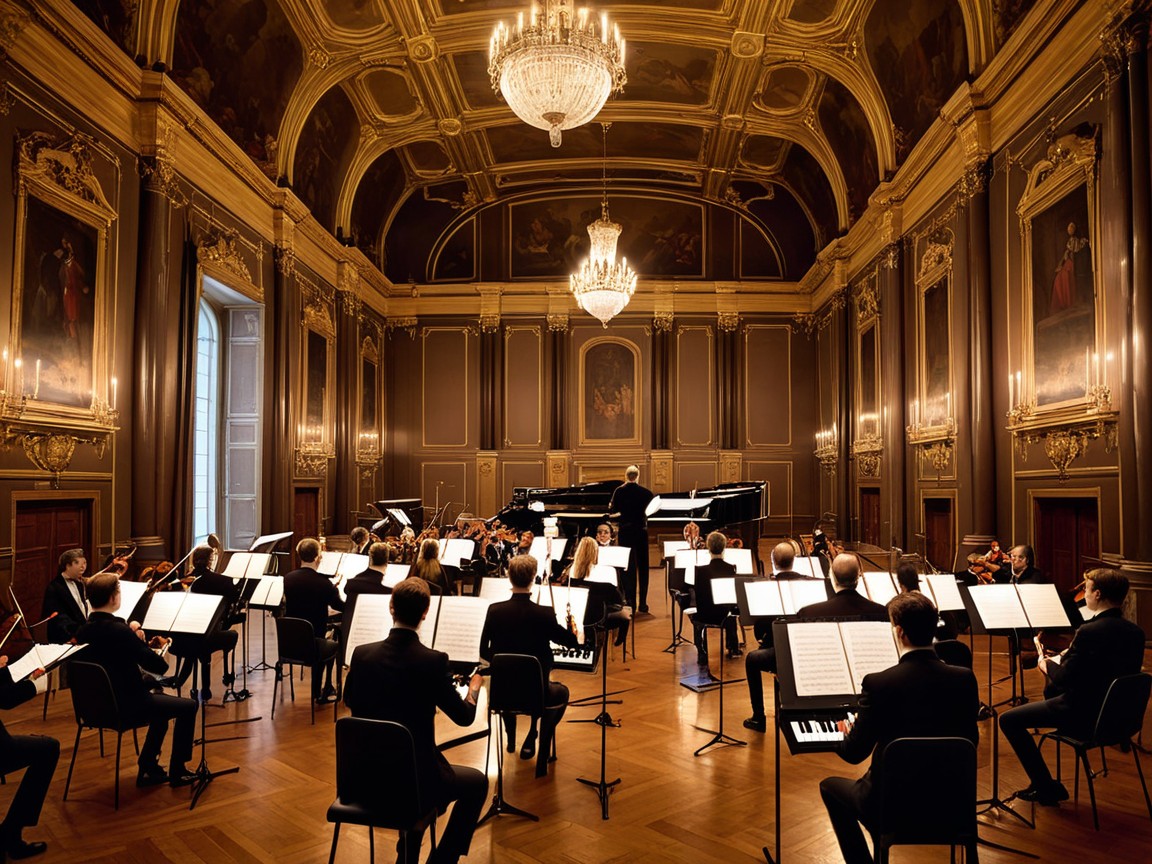
Ethical Concerns in AI-Generated Classical Music
The classical community raises several ethical questions:
- Should AI-composed works be clearly labeled as such?
- Who owns the rights to music created by AI trained on past composers?
- Is it appropriate to create “new works” in the style of deceased composers?
- Does AI classical composition devalue human creativity?
These questions don’t have simple answers, but they’re shaping how AI in classical and orchestral music develops.
Accessibility for Emerging Classical Artists
On the positive side, AI democratizes classical composition:
- Composers without orchestra access can hear their works realized
- Students can experiment with orchestration without expensive resources
- Independent artists can create orchestral soundtracks and backgrounds
- Amateur composers can learn from AI analysis of their work
This accessibility could help diversify classical music by lowering barriers to entry, especially for those without formal training or institutional connections.
Case Studies and Innovations in AI in Classical and Orchestral Music
Several landmark projects show how AI is changing classical music.
Key Projects Using AI in Classical Music
AIVA (Artificial Intelligence Virtual Artist):
- First AI recognized as a composer by a music rights organization
- Creates full symphonic pieces performed by professional orchestras
- Users can generate custom orchestral works by setting parameters
OpenAI MuseNet:
- Generates sophisticated multi-instrument compositions
- Can blend classical styles with other genres
- Creates convincing pastiches of specific composers
Google Magenta:
- Focuses on interactive tools for composers
- Developed piano duet systems where AI responds to human players
- Creates tools for generative composition systems that anyone can use
These platforms demonstrate different approaches to AI music theory and application.
Collaborations Between Composers and AI Tools
Some of the most exciting work happens when human composers partner with AI:
- Emmy-winning composer Lucas Cantor collaborated with AIVA on “Genesis”
- Film composer Harry Gregson-Williams uses AI to explore orchestral textures
- The London Symphony Orchestra performed pieces co-written by humans and AI
These partnerships show how AI tools for classical music composers can enhance rather than replace human creativity.
Role of AI in Preserving and Reconstructing Lost Works
One of the most valuable applications of AI in classical and orchestral music is restoration:
- The Beatles’ “Now And Then” (2023) used AI to isolate John Lennon’s 1978 demo vocals
- This technology enabled the first “new” Beatles track in decades
- The song went on to win the 2025 Best Rock Performance Grammy
Source: Ohio University
Similarly, Sony’s “Bach AI” completed 98% of Bach’s unfinished “Contrapunctus XIV” by analyzing patterns across 1,200 fugue sketches, allowing audiences to hear what might have been if Bach had lived to finish the work.
The Berlin Philharmonic’s 2024 “Bach X AI” project went even further, using AI to reconstruct 18th-century tuning systems. This created historically informed performances that could be heard through AR headphones while watching modern instruments.
The Future of AI in Classical and Orchestral Music
Where is this technology headed next?
Predictive Composition Models and Personalized Symphonies
Future AI symphonic compositions might:
- Create music that adapts to individual listeners
- Generate pieces based on a person’s listening history and preferences
- Compose works that evolve differently each time they’re performed
- Blend classical traditions with a listener’s favorite modern genres
These developments could make classical music more personally relevant to new audiences while preserving its core attributes.
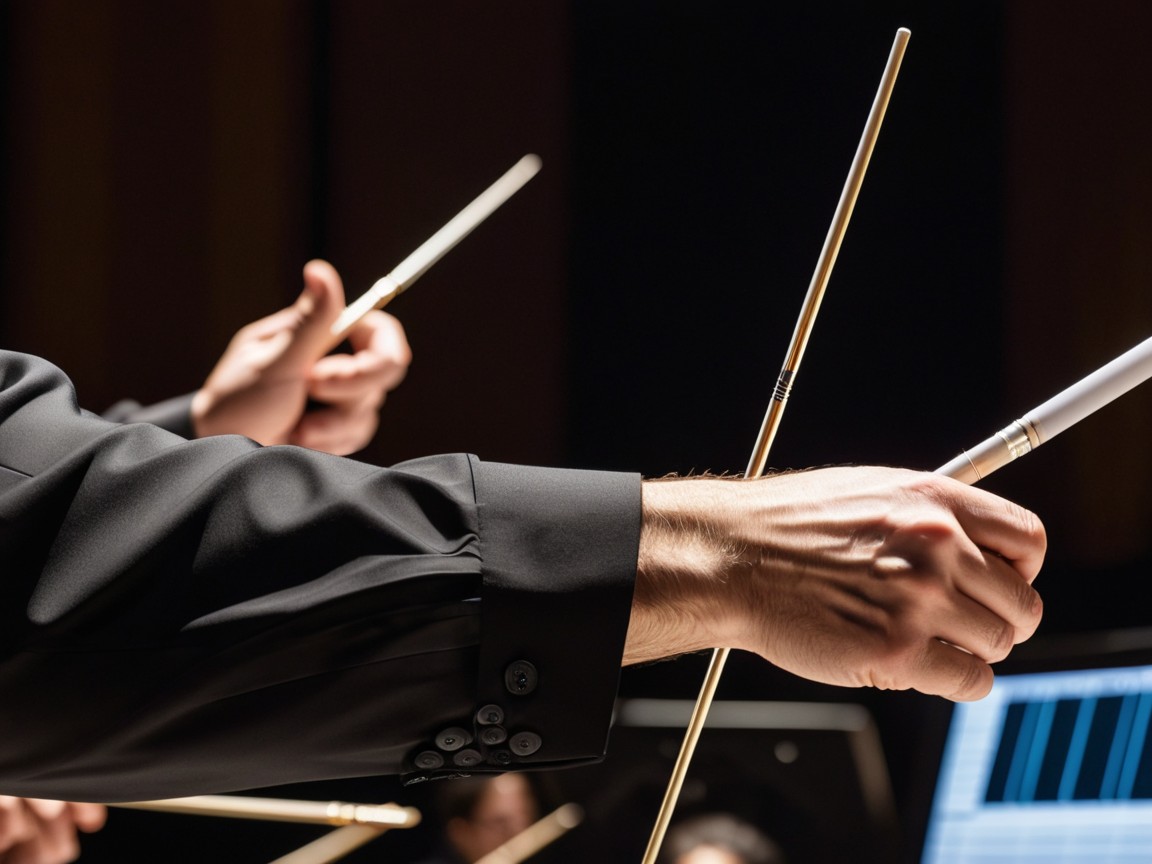
Educational Tools for Music Students Using AI
AI in classical and orchestral music is transforming education:
- Students receive real-time feedback on their playing
- AI creates custom practice companions that adjust to skill level
- Composition students can instantly hear their work played “by an orchestra”
- Theory concepts become interactive through AI demonstrations
These tools make high-quality classical music education more accessible outside elite institutions. The AI music by genre approach also helps students understand stylistic differences across classical periods.
New Hybrid Genres Combining Classical with AI-Created Elements
The most exciting possibility may be entirely new musical forms:
- Live orchestras performing alongside responsive AI systems
- Classical/electronic hybrid performances with AI mediating between worlds
- Interactive concert experiences where audience input shapes the AI component
- Works that evolve over time as the AI continues learning
These possibilities suggest that AI in classical and orchestral music won’t just replicate the past but create something genuinely new.
FAQs – AI in Classical and Orchestral Music
Can AI compose classical music as well as human composers?
AI can generate technically impressive classical compositions, but most experts feel it still lacks the emotional depth and intentionality of human composers. AI-generated classical music excels at structure and pattern but may miss the subtle expressive choices that make great classical works truly moving. That said, the technology is improving rapidly, and the gap is narrowing.
Are orchestras currently performing AI-composed pieces?
Yes, several major orchestras have premiered works either generated by or created with assistance from AI. The London Symphony Orchestra, Brussels Philharmonic, and others have performed pieces created with AIVA and similar platforms. These performances test how AI composes classical symphonies and how audiences respond to the results.
Is AI changing how classical music is taught?
Absolutely. AI orchestral tools now provide students with instant feedback, generate practice accompaniments, and demonstrate theoretical concepts. Composition students can hear their work realized by virtual orchestras, and performers can practice with responsive AI accompanists. These tools make high-quality classical education more accessible and interactive.
Will AI ever replace classical composers?
AI is more of a collaborator than a replacement, enhancing but not substituting human creativity in classical music. While AI can generate technically correct compositions, the artistic vision, emotional intent, and cultural context that human composers bring remain invaluable. The future of AI in orchestral performance likely involves human-AI partnerships rather than AI taking over entirely.
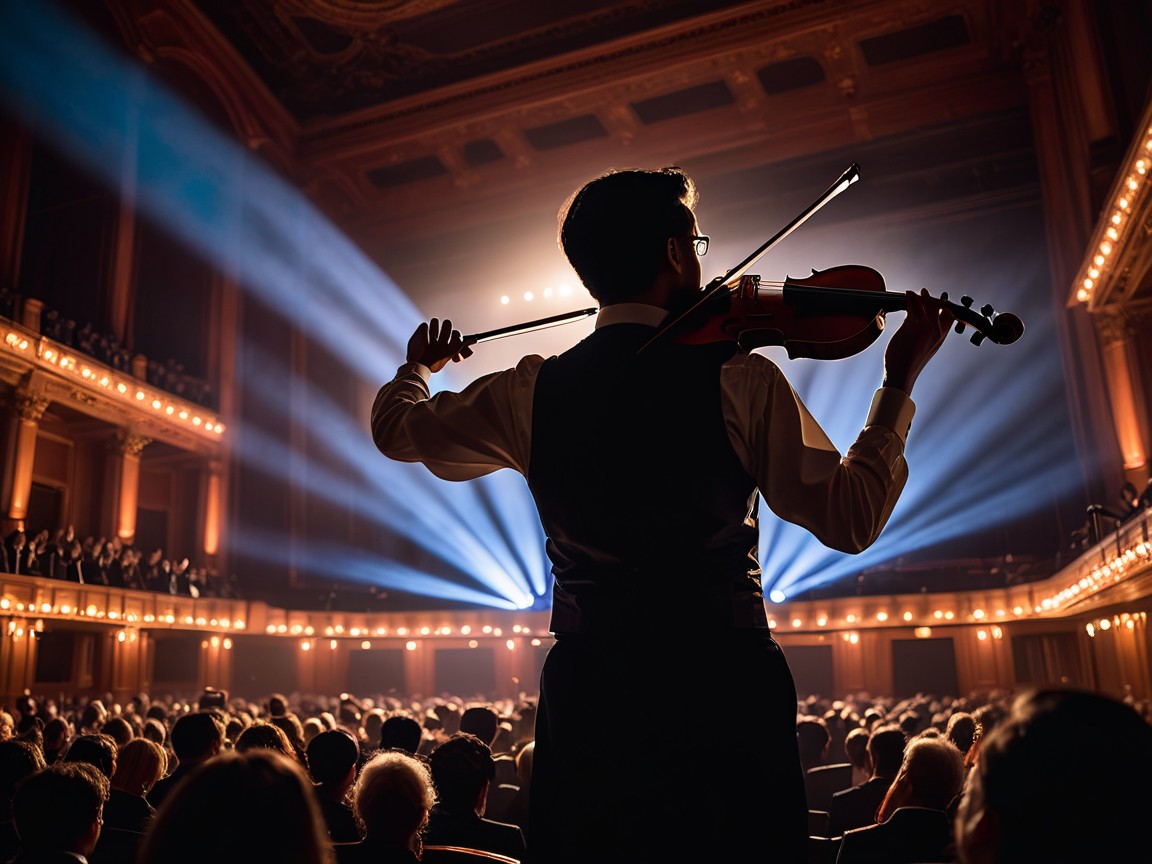
Conclusion: The Evolving Symphony of AI in Classical and Orchestral Music
Classical music has survived for hundreds of years by adapting while keeping its soul intact. AI in classical and orchestral music is just the latest chapter in this story.
The most exciting stuff isn’t AI perfectly mimicking dead composers (though that’s pretty cool too). It’s about what happens when human creativity meets machine capabilities – opening doors for people who could never access orchestral music before, helping composers explore new ideas faster, and keeping this centuries-old art form fresh in our digital world.
As these tools get better, we’ll probably see even wilder developments – like symphonies that change based on how the audience reacts, or hybrid performances where traditional orchestras and AI systems create something totally new together. The collaboration between human emotion and artificial intelligence is just warming up, and the music they’ll make together promises to be amazing.
